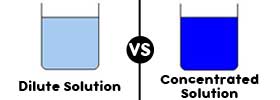Difference between HTML5 and XHTML5
Key difference: HTML5 is the fifth revision of the HTML standard. HTML stands for HyperText Markup Language. It is a well known mark up language used to develop web pages. The core aims of HTML5 have been to improve the language with support for the latest multimedia. XHTML5 is the XML serialization of HTML5. XHTML5 is essentially the hybrid of XML and HTML5. XHTML5 uses the XML's strict, well-formed syntax.
 HTML5 is the fifth revision of the HTML standard. HTML stands for HyperText Markup Language. It is a well known mark up language used to develop web pages. It has been around for a long time and is commonly used in webpage design. XML or Extensible Markup Language defines a set of rules for encoding documents in a format that can be read by both, human and computer.
HTML5 is the fifth revision of the HTML standard. HTML stands for HyperText Markup Language. It is a well known mark up language used to develop web pages. It has been around for a long time and is commonly used in webpage design. XML or Extensible Markup Language defines a set of rules for encoding documents in a format that can be read by both, human and computer.
HTML is written using HTML elements, which consist of tags, primarily and opening tag and a closing tag. The data between these tags is usually the content. The main objective of HTML is to allow web browsers to interpret and display the content written between the tags. The tags are designed to describe the page content. HTML comes with predefined tags. They allow one to insert images, text, videos, forms and other pieces of content together into a cohesive webpage.
Elements of HTML are the basic building blocks of all websites. HTML allows images and objects to be embedded in the webpage. It can also be used to create interactive forms. HTML also provides the means to create structured documents. It does this by denoting structural semantics for text such as headings, paragraphs, lists, links, quotes and other items. However these days, web pages are rarely designed using only HTML. HTML allows for the programmer to embed scripts written in languages such as JavaScript, which many often do. This changes the look and behavior of the HTML web pages.
The core aims of HTML5 have been to ‘improve the language with support for the latest multimedia while keeping it easily readable by humans and consistently understood by computers and devices, such as web browsers, parsers, etc.’ HTML5 supercedes HTML 4, as well as XHTML 1 and DOM Level 2 HTML. Additionally, as of December 2012, HTML5 is W3C Candidate Recommendation.
HTML5 aimed to address the variety of mixture of features introduced by various specifications by various browsers. It also aimed to address the many syntax errors in existing web documents. Additionally, it attempts to define a single markup language that can be written in either HTML or XHTML syntax. It is also backward compatible with the previous HTML versions.
 XHTML stands for Extensible HyperText Markup Language. It is a markup language written in XML. It is a collection of XML markup languages that mirror or extend versions of HTML. Essentially, it is a hybrid between HTML and XML specifically designed for Net device displays. It is HTML defined as an XML application.
XHTML stands for Extensible HyperText Markup Language. It is a markup language written in XML. It is a collection of XML markup languages that mirror or extend versions of HTML. Essentially, it is a hybrid between HTML and XML specifically designed for Net device displays. It is HTML defined as an XML application.
XHTML5 is the XML serialization of HTML5. XHTML5 is essentially the hybrid of XML and HTML5. XHTML5 uses the XML's strict, well-formed syntax. The choice between HTML5 and XHTML5 depends on the MIME/content type used; i.e. the media type used will dictate whether HTML5 or XHTML5 will be used.
As XHTML is in part HTML, it is supported by almost all major browsers. However, in order to be compatible with the said Net devices, XHTML must go through a modularization process. In this, the device designer will specify which elements are supported by using standard building blocks. The content creators can then target these building blocks or modules. These modules conform to certain standards. Hence, XHTML extensibility makes sure that the layout and presentation stays more-or-less the same over various platforms.
Some differences between HTML5 and XHTML5:
- HTML5 and XHTML5 are dependent on the choice of a MIME/content type.
- In XHTML5, the HTML5 doctype html is optional and may simply be omitted.
- A polyglot markup is HTML that has been written to conform to both the HTML and XHTML specifications. It will also produce the same DOM tree whether parsed as HTML or XML.
- In XHTML5, the HTML5 doctype is not used; instead the xmlns attribute is required.
- HTML5 includes HTML 4, XHTML 1 and DOM Level 2 HTML.
- HTML5 is compatible with all types of browsers, whereas XHTML may not be.
- Maintenance of XHTML is easy.
- XHTML is XSL ready. It can be used for creating a table of contents for a long document, overview of a page and produce an RSS feed directly from a webpage.
Image Courtesy: w3.org, blog.echoenduring.com









Comments
Good write-up.
Ik
Thu, 02/06/2014 - 21:38
Add new comment